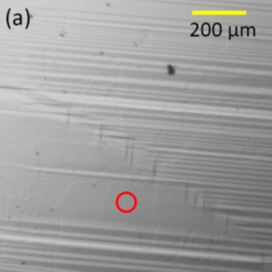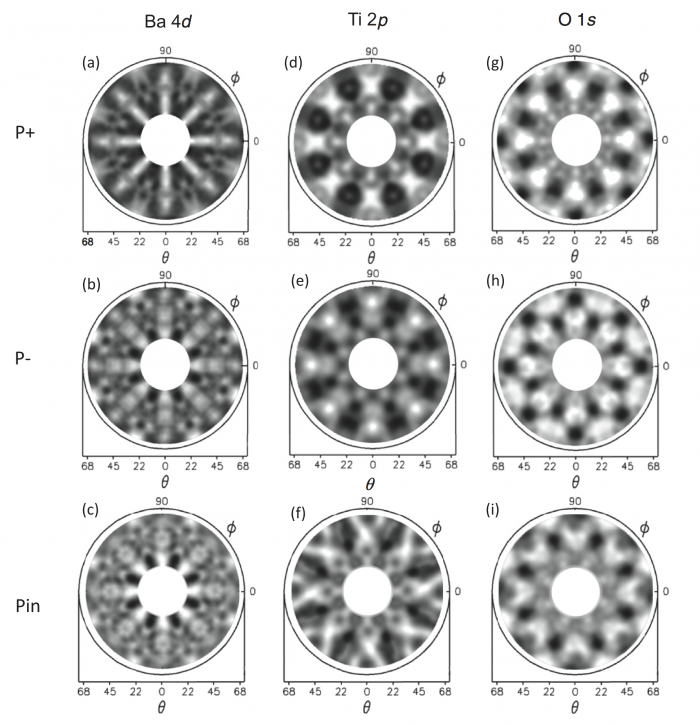A team made of French (IRAMIS, CEA, CNRS, Synchrotron SOLEIL), Brazilian (State University of Campinas, Federal University of Goiàs), Austrian (ISSSP Linz University) and Romanian (Material Physics National Institute) scientists used the synchrotron radiation, and more specifically the ANTARES beamline to analyze the surface behaviour of a common ferroelectric crystal: BaTiO3, using Bragg scattering techniques.

Figure 1: Optical micrograph of a single crystal of BaTiO3
Ferroelectric materials show a spontaneous electrical polarization which can be inverted by applying a simple electric field. As a result, they arouse a great deal of interest thanks to their potential for a new generation of electrical devices which would be less energy-consuming and presenting a high-speed reading and a high-density storage capacity.
The surface of a ferroelectric (FE) material is likely to show a distinct fixed polarization charge, creating an internal electric field, the depolarizing field, which can cancel – partially or completely – the polarization of the material. This may present a major obstacle toward applications that use thin-layer FE materials. Nevertheless the depolarizing field can be softened by various mechanisms and surface or near-surface alterations (rumpling, relaxation and reconstruction). On genuine surfaces, several of these mechanisms can combine. The understanding of such combinations has a real importance for prediction and control of ferroelectric stability.
Researchers studied the surface behaviour of a ferroelectric material, BaTiO3, commonly used to study FEs. They especially studied rumpling and relaxation phenomena in following atom layers, by comparing the simulation to the data obtained on the ANTARES beamline at SOLEIL. Beyond the fourth layer of atoms, relaxation is negligible, when the rumpling gets close to the one we should expect for this volume of BaTiO3.

Photoelectrons diffraction patterns of domains of BaTiO3 (001) with different polarizations.
As a result, polarization is weaker on the surface, partly because of the atomic shifting of matter. However, it doesn’t disappear completely so the FE properties remain.
Considering the width of the incident beam, it would be interesting to reduce it in order to spatially analyze a sample, so to study precisely unique FE domains.
